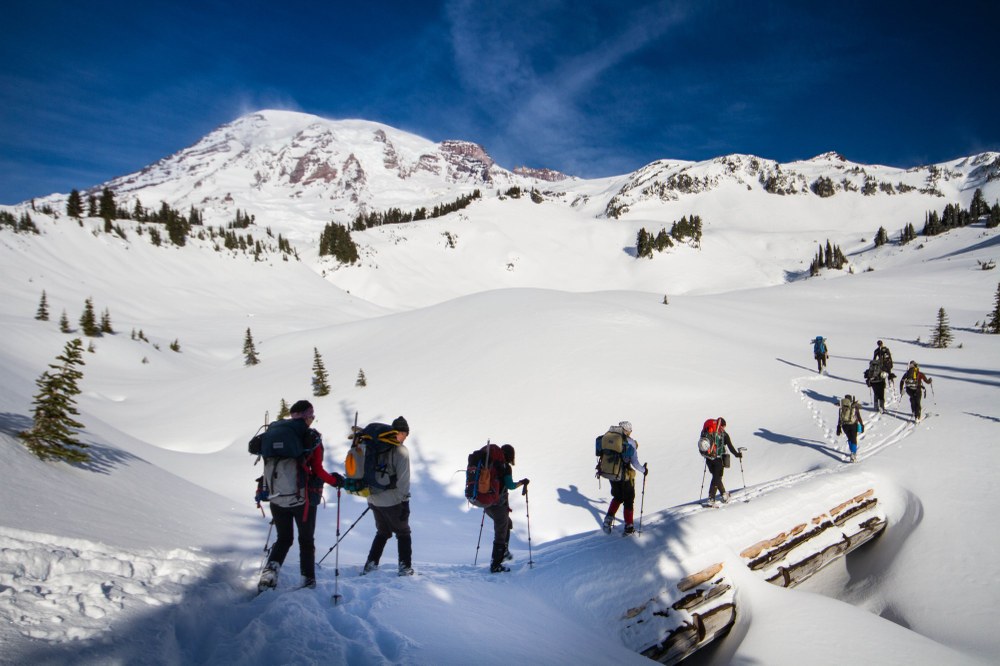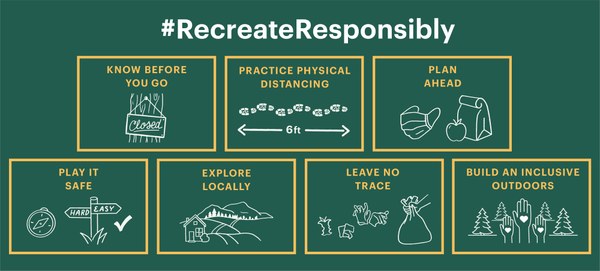
Like many aspects of our lives, 2020 has been a roller coaster of a year for public lands. During the initial weeks of the coronavirus pandemic, public lands in Washington State closed as a result of Governor Inslee’s ”Stay Home, Stay Healthy” order.
When places began to open up in early May, hordes of cooped-up Washingtonians flocked to trails and parks – and they haven’t stopped. With guidance from public health officials encouraging outdoor activities over indoor ones due to relative safety, public lands have experienced higher visitation than ever before.
Setting records
Participation in outdoor recreation has been steadily increasing for years, but land managers reported unprecedented challenges in 2020. Campgrounds were at capacity all summer, trailhead parking spilled over onto roadsides, and excessive amounts of trash and human waste were rampant. Visitation was so high in the Mount Baker-Snoqualmie National Forest that “weekdays looked like weekends, and every weekend looked like the Fourth of July,” said Mike Schlafmann, Public Services Staff Officer. Land managers faced this increased use with limited resources as most agencies were short-staffed due to pandemic restrictions. Sometimes agencies were forced to close public lands due to overcrowding, including popular areas like Lake Cushman on the Olympic Peninsula.
Even with strategies like getting out mid-week and avoiding popular areas, Mountaineers felt the impact of busy trails, crags, and parking lots this summer. Members Steve Smith and Tamara Walker went for a mid-week hike up Sahale Arm and found “the parking as full as we’d ever seen it, with cars backed up down the road.” Volunteer Jerry Logan and his climbing partners descended from a climb of Mount Baker on a Thursday in late August and encountered 75 to 100 people on the trail, far more than a normal year. Member Jen Louie reported that “unfortunately, it’s hard to avoid the increasing amounts of garbage I’ve seen on the trails and at campsites.” She and her partner found a fire ring, trash, and human waste at the bivy site at the base of Cutthroat Peak this past August – which they ended up cleaning up.
Not surprisingly, search and rescue teams saw a surge of calls over the summer. By the end of Labor Day weekend, the Snohomish County Sheriff’s office reported that the volunteer search and rescue team had been on 330 missions in 2020 compared to 200-280 in previous years. On top of record breaking calls, “we’re spread incredibly thin with multiple incidents running at a time, increasing complexity due to PPE, sanitation, and contact tracing requirements, and a reduction in the volunteer workforce,” reports Jen Brenes of King County Search & Rescue.

Recreate Responsibly Coalition
When public lands opened back up in May, The Mountaineers partnered with others in the outdoor community to form the Recreate Responsibly Coalition. We saw a clear need to develop and share best practices for how to get outside safely and responsibly during the coronavirus pandemic. The coalition developed several tips for recreating responsibly, including “Know Before You Go,” “Practice Physical Distancing,” “Leave No Trace,” and more. These tips offered practical guidelines for how to protect each other and public lands during the pandemic, from when to wear a mask outdoors to encouraging people to choose lower-risk activities. The Mountaineers shared these guidelines widely with our community and incorporated them into our reopening guidance for Mountaineers programs. Nationwide, the Recreate Responsibly guidelines have reached more than 188 million people with over 50,000 posts on social media.
Land managers reported that the Recreate Responsibly messaging has made a difference. “We have felt and seen it in the Park in terms of broad public support, compliance, and the way people are behaving,” said Chip Jenkins, Superintendent of Mount Rainier National Park. Anecdotal evidence points to widespread adoption of the recommendation to wear a mask when passing people on the trail. While Steve and Tamara were dreading the crowds on Sahale Arm after seeing the busy parking lot, “we were delighted to encounter well over a hundred people on the trail, almost every single one wearing a mask, stepping aside for others, and maintaining COVID etiquette.”
The Recreate Responsibly Coalition holds regular calls with a wide variety of outdoor recreation-focused groups and land managers to share information and respond to changing needs, including priorities like publicizing wildfire closures or sharing trash reduction tips. Looking towards the colder months, the group is developing Recreate Responsibly tips for winter recreation. With more people expected to get outside to snowshoe, ski, and snowboard than in past years, it’s paramount that recreationists are well prepared and informed.
Fostering future stewards
More people outdoors presents a number of challenges, but it also provides opportunities to educate new users and create more stewards of public lands. “From our perspective this is great news,” said Chip Jenkins of Mount Rainier National Park. “The value of public lands is clearly being demonstrated by a broader range of people visiting and recreating in record numbers. This is an opportunity to build broader and deeper stewardship of public lands.”
Immersive outdoor experiences make our community powerful advocates for public lands, and they have the potential to do the same for everyone seeking solace in nature during the pandemic. When people are deeply connected to the outdoors, they are more motivated to speak up to defend it. That means more voices uniting to protect public lands, invest in parks and trails, and advocate for climate solutions. The Mountaineers has always believed that getting people outdoors creates strong connections to the natural world. Welcoming people of all backgrounds to outdoor spaces, while educating them to be good stewards, is key to building the next generation of conservationists.
The changes we’ve seen on public lands this year underscore the relevance of the mission of The Mountaineers, and bring new urgency to our work to protect the outdoor places and experiences we love. Together, we can ensure that wild places can be enjoyed for generations to come.
To learn more about how to recreate responsibly during the coronavirus pandemic, visit recreateresponsibly.org.
This article originally appeared in our Winter 2021 issue of Mountaineer Magazine. To view the original article in magazine form and read more stories from our publication, visit our magazine archive.
 Betsy Robblee
Betsy Robblee